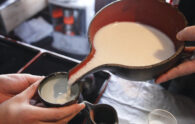Every time there’s been an ILC conference nearby, I worry about the vegetarians and vegans. What are they managing to eat? And what will vegetarian and vegan ILC researchers do when they live here?
To learn more, I talked to Christine Takisawa! I’ve wanted to interview her because she’s an active Google local guide who hosts meetups at her favorite vegan cafes, creates articles and reviews, and even created an overall map of her favorite vegan and vegetarian spots in Iwate!
Christine is from Ann Arbor, Michigan in the US and currently lives in Shiwa near Morioka City. She studied abroad in Iwate in college, fell in love with the place, and has lived here since 2010. She went fully vegetarian in college, and is currently a pescatarian so her Japanese in-laws have a better chance of figuring out what to feed her.
Christine’s Survival Tips
Start with Definitions
“One of the thing I recommend if you don’t speak Japanese is bring a card that explains what you can and can’t eat. One of the biggest challenges is people don’t know what vegetarianism is, and they don’t really think about what’s in their cooking. So you have to be really specific and go through every ingredient you can’t eat.”
Get Creative
Usually safe foods include pizza margarita at Italian restaurants, and onigiri rice balls with konbu seaweed or umeboshi filling. For the wide variety of cold noodles served here, like zarusoba, you can also bring your own safe dipping sauce (for example, mix this konbu stock with hot water and a little soy sauce and sugar). No restaurant has ever minded Christine doing this.
Find the Safe Spots
Explaining everything and working to find something to eat can be exhausting. (Though it can have side benefits, as explaining her vegetarianism at a café is how Christine met her husband!)
“That’s one of the reasons I started holding meetups. ‘These are vegan restaurants, you can walk into this restaurant and you don’t have to ask anything.’ Everything is safe. You get used to the emotional labor, but it is nice to have those restaurants where you don’t have to think about anything.”
What can local governments and businesses do?
Education is the first step. “I would love people to know what vegetarian meant, if someone could go around local businesses, and at least say ‘hey, this is what it means if someone says I am vegetarian’ or ‘I’m vegan.” It would be helpful if businesses and local governments also grasped how common and normal it is for so many people worldwide. In India, over a third of the population is vegetarian. At least 10% of people in Taiwan are vegetarian.”
Some restaurants in Japan mistakenly believe that they are being asked to change their entire menu and business concept, but that’s not the case at all. Many restaurants accommodate vegetarians and vegans with a couple menu items without changing anything else. In Christine’s hometown of Ann Arbor, Michigan, every restaurant has a vegetarian option that isn’t a salad, even steakhouses. (Out of curiosity, I even looked up my tiny hometown of Silverton, Oregon, and it turns out my favorite Thai restaurant has a vegetarian menu section and vegan options.)
After tweaking one dish to make it vegetarian (or possibly, discovering a menu item was vegetarian in the first place) ideally restaurants would use a logo to show what menu items are vegetarian-friendly. “In India, they have a universal green flag. Everywhere in India, if you see that little green flag, it means this is vegetarian. Have a mark, like a green leaf, and spread that within Japan. Restaurants can say, OK, this menu item is vegetarian, so we can stick the vegetarian symbol on that. That way, there doesn’t have to be this long dialogue between the wait staff and the cook every time a vegetarian comes in.”
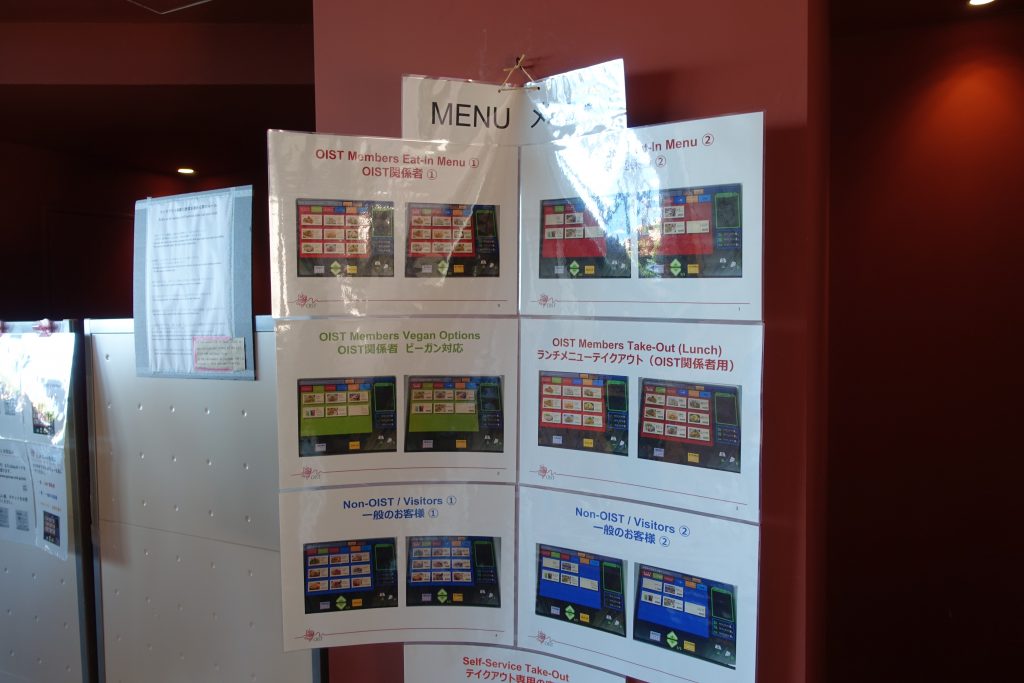
Vegan options available with the rest of the options at the Okinawa Institute of Science and Technology (OIST)
As locals work little by little towards a broader understanding of vegetarianism and veganism in Japan, I hope this article has helped more people enjoy Iwate and its food!
I for one have a date with a vegan Morioka restaurant with some tasty-looking fried options.
LINKS
Christine’s map, Iwate Vegan and Vegetarian Eats
“My Top 3 Vegan Eateries in Morioka” by Christine
Just Hungry printable cards for communicating dietary restrictions in Japan
Japanese
「私も岩手のおいしいを味わいたい!」岩手とベジタリアン・ビーガン奥州市 ILC国際化推進員
アンナ・トマス
ベジタリアン、ビーガンとは?
和訳を読んでいる方によってなじみのないことかもしれませんので、簡単にまとめました!
ベジタリアンの人は、動物肉(豚肉、牛肉、鶏肉など)と魚介類が食べられません。さらに、その肉を材料とした汁、出汁、エキスなども食べません。(卵、乳製品などを食べる・食べないなどもっと細かい種類もあります)
ビーガンの人は、ベジタリアンと同様、エキス・出汁などを含めてすべての肉からできているものを食べません。また、卵、蜂蜜、乳製品も食べません。多くの食品に、卵や乳成分が入っているため、対応する際には工夫が必要です。
近くでILC関連の国際会議が開催されるたびに、ベジタリアンとビーガンの研究者のことが気になります(毎回、必ず数名います)。十分に食事をとられているのか?さらに、ILCが実現すると、そういうベジタリアン・ビーガンの方はこの地域でどう生活していけばいいのか?
ということで、岩手県に在住している瀧澤クリスティーンさんにインタビューをしました。クリスティーンさんはお気に入りのビーガンカフェ(ビーガン用の料理を供するレストランカフェ)でイベントを開催して、ビーガン・ベジタリアンなどに関する記事やレビューを書いて、岩手県内のおすすめビーガン・ベジタリアンレストランが載っている地図も作成するなど、グーグルローカルガイドとして活発に活動しています。
【地図】
【写真】
クリスティーンさんはアメリカミシガン州のアナーバー市出身で、今紫波町に住んでいます。大学時代に岩手で留学した際に岩手に一目惚れして、大学を卒業した後、2010年から岩手に在住。大学時代から本格的なベジタリアンでした。今は、日本人の義理のお父さんとお母さんが食事対応に困らないようペスカトリアンです。(ペスカトリアンとは、魚介類を食べますが、鶏肉、豚肉、牛肉を食べません)
クリスティーンさんから、ベジタリアン、ビーガンへのアドバイス
まず定義から
日本語でのやりとりが難しい場合は、日本語で食べられるもの・食べられないものを説明するカードを持参することをおすすめします。日本で結構大変なのは、ベジタリアンの意味が分からなく、材料をあまり意識したことがない人が多いことです。なので、詳しく食べられないものを丁寧に一つ一つ伝えて、確認する必要があります。
【写真】
クリエイティブに工夫
イタリアンレストランでのピザマルガリータ、昆布や梅干し入りのおにぎりなら大抵ベジタリアンでも食べられます。そして、ざるそばなど冷たいつけ麺には、ベジタリアンのつけ汁を作って店に持ち込むことができます(例えば、魚エキスなどが入っていない昆布だしをお湯、醤油、砂糖に混ぜたもの)。クリスティーンさんは今まで何回かつけ汁を持ち込みましたが、問題視した店がなかったと言います。
安心して食べられる店を探し出す
ベジタリアンの定義を常に説明しながら、食べられるものを見つけるのは大変です。(ただし、時々、思いがけないきっかけにつながります。例えば、クリスティーンさんと旦那さんとの出会いのきっかけは、カフェでベジタリアンの説明をしたことでした!)
「そこで、ビーガンカフェでイベントを開催するようになりました。この店はビーガンなので、何も説明しないで安心して何でも注文できる。食べられないものはないです。食べるのに手間がかかることに慣れても、何も考えないで食事できるレストランがあるとほっとします。」
【写真】
自治体、地域の企業にできることは?
やはりベジタリアンやビーガンによりやさしい環境づくりにはまず周知・情報提供が必要。「ベジタリアンの定義をお店に分かっていただければ大変助かります。どなたかがその地域の飲食店を回って、ベジタリアンはこういう意味でビーガンはこういう意味だよ、と簡単でも説明したら最高です。」そして、日本では珍しいかもしれませんが、肉を食べない習慣は、世界的に見ればごく普通のことだと自治体と企業に理解してほしいと言います。例えば、インドでは人口の3割以上、台湾では約1割がベジタリアンです。
【写真】
クリスティーンさんが岩手で食べたベジタリアン料理の一部(写真提供:クリスティーンさん)
店のコンセプトとメニューをすべてベジタリアン対応にするようにお願いされていると誤解する日本の飲食店もあるようですが、そんなことをする必要がありません。多くのレストランは、メニューの一品、2品程度を提供することでベジタリアン・ビーガン対応をしています。例えば、クリスティーンさんのホームタウン、ミシガン州のアナーバー市では、ステーキレストランも含めてほぼすべてのレストランがメニューにサラダではないベジタリアン対応している一品があります。(好奇心で著者のホームタウン、オレゴン州にある田舎の小さいシルバートン村を調べたところ、お気に入りのタイレストランのメニューにベジタリアン向けメニューとビーガン対応数品を出していると分かりました!)
一品を多少調整してベジタリアンが食べられるようになったら、(または、すでにベジタリアンOKなものがメニューにあると分かったら)理想的には、一目で分かるようにメニューにマークをつければいいのです。「インドでは、どこに行っても、ベジタリアンOKである商品、メニューに緑の旗マークをつけています。日本でも、そういうマークが普及するようにすれば、メニューにマークをつけるだけでベジタリアンの人が店に訪れるたびに発生する長いやりとりが省略できます。」
現地で少しずつベジタリアンとビーガンへの理解を深めながら、対応できるようになるといいですね!この記事がより多くの人々に岩手とそのおいしい食べ物を満喫できるように少しでも役立ったら幸いです。
【写真】
OIST(沖縄科学技術大学院大学)の食堂メニューにもベジタリアンの選択肢あり
さて、私も近いうちにクリスティーンさんおすすめの揚げ物が多い盛岡にあるビーガン店に行ってみようかな!

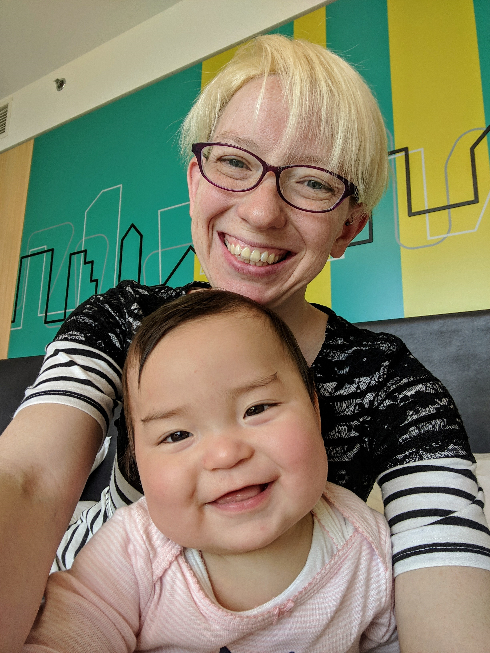
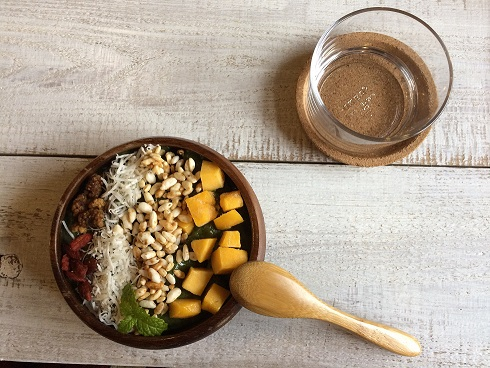
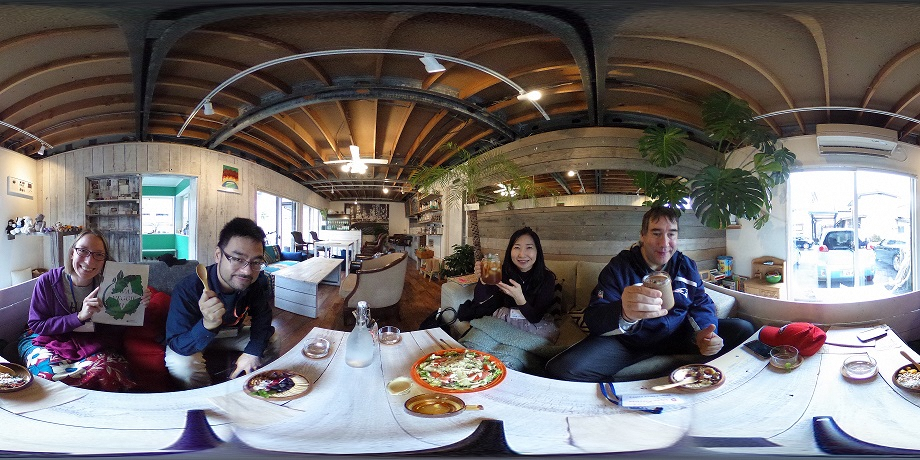
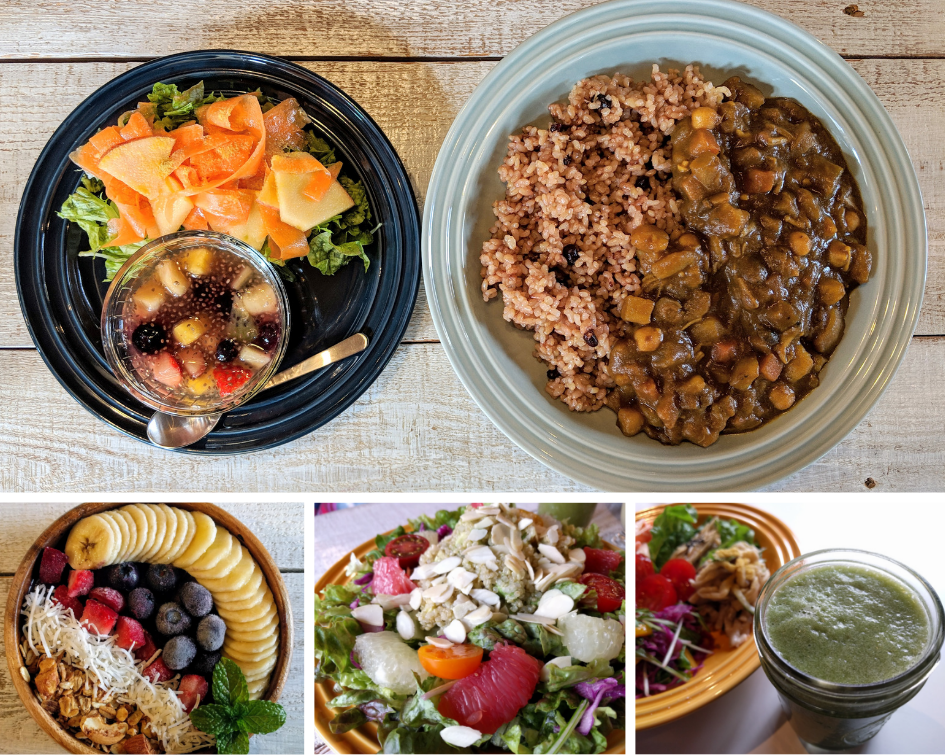
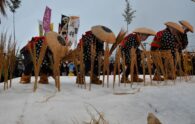
-195x124.jpg)
